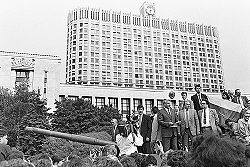Hosni Mubarak finally agreed to haul his old butt off the pharoah’s chair in Egypt, and the wheat market slightly rallied in response.

At least that’s what Agricharts told me, and I don’t know any different, so that’s the truth for now.
About the wheat markets, I mean. I didn’t find out about Hosni’s decision from Agricharts. I owe that to a fellow named Pepi from India, who popped into an online discussion I was having with an Italian friend to inform us of the news of the autocrat’s fall. So that’s where I’ll always remember being when I think of that historical moment – in the Western Producer office in Winnipeg, looking at the screen, talking to people on two other continents. Rather apropos, methinks, of this plugged-in age.
If things settle down in Egypt now it’ll be good for the continuation of the market rally, because as long as Egypt keeps buying, that sucks grain out of the system. If the whole place melted down in bloodshed, strife and chaos, that source of demand would disappear for some time. So the market relief is reasonable.
I missed Kennedy getting shot, which is a big moment for baby boomers to remember where they were when they heard the news. I wasn’t yet walking this earth in 1963.
I certainly remember where I was when I heard that Kurt Cobain died – chained to my rowing bench in the slave galley in which I was held captive, or at least “employed,” at the time, in Toronto. That was a sad night.
And I remember where I was in August 1991, when a cabal of reactionary communist generals attempted a coup against Mikhail Gorbachev and Boris Yeltsin’s quickly-transforming Soviet Union. I was in the office of a rural Ontario newspaper at which I had a summer job.

These moments of historical shift are rare, part of the punctuated equilibrium of history and evolution.
Which draws my mind inevitably back to the historical market rally we’re all sucked-up on the inside of. What we’re living through right now is a historical crop market rally that I have do doubt that we’ll look back at in future decades and tell stories about. Urbanites may tell tales of when they stormed grocery stores in riots due to slightly increased corn flakes prices. Farmers will all tell (very tall) tales of how they managed to sell 100 percent of their crops at the absolute peak of the market. I will tell inaccurate and unverifiable tales that I saw the whole thing coming and predicted EXACTLY WHAT HAPPENED.
Read Also

Canola or cars? Canada can’t save both
Canola is a winning industry. It feeds the economy, supports thousands of families and helps keep our rural communities alive.
But for all of us watching the ag markets, it isn’t going to be as easy as with politics and culture to know when we’ve seen the big event. When Hosni gets into the unemployment line, we know something big’s happened. When Cobain was dead, he was dead. When the Soviet coup collapsed, we all bought Boris a worldwide round of drinks, which he kept consuming for 18 years. And when Kennedy got shot, people in that simpler time just stopped for a while.
But we won’t know that this ag market’s peaked until well after the peak’s past, and back in history. We’ll think the big turn downwards was just a correction on a continuing path upwards. So if, some days, weeks, months from now we try to remember where we were when wheat/canola/oats/etc. peaked this time, we’ll have to check our memories, because we certainly won’t realize it at the time.
On the completely different note of the other day, I see that an artist’s rendition of one of the Canadian Wheat Board’s new fleet of grain-hauling great lakes ships has been released by a graphic artist known as P Daddy. Apparently my suggestion that the ships be named after a British battleship has been embraced, and the design of the vessels will similarly reflect one. Look here at this beautiful hull:
















